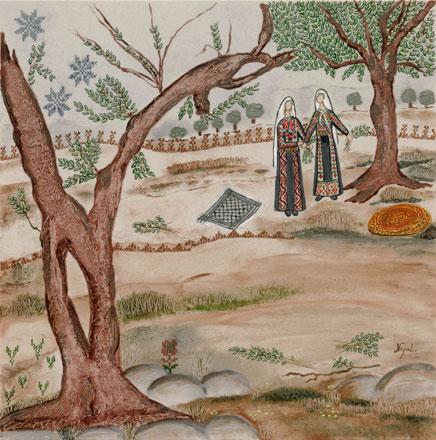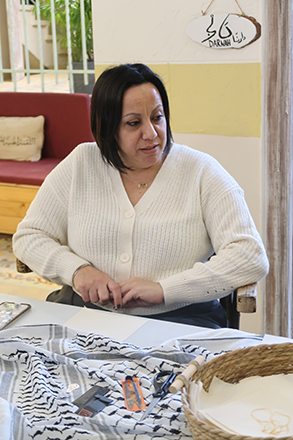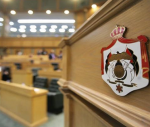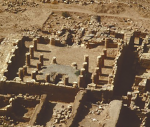You are here
Artist preserves traditional Palestinian embroidery patterns on porcelain tiles
By Dana Al Emam - Jul 09,2015 - Last updated at Jul 09,2015

Canada-based artist Najat El-Khairy preserves embroidery patterns from traditional Palestinian dresses in drawings on porcelain tiles (Photo courtesy of Najat El-Khairy)
AMMAN — In a bid to prevent traditional Palestinian embroidery patterns from dying out, Najat El-Khairy uses porcelain as a sustainable and long-lasting painting medium.
As fabrics and dresses wither with time, the artist preserved cross stitch embroidery patterns from traditional Palestinian dresses in drawings on porcelain tiles.
“I was in awe and admiration of our beautiful and unique Palestinian embroidery and I wanted to paint it and show it to the world,” El-Khairy said, adding that it is important for her to combine traditional and modern tools to reach out to a larger audience, enlighten the younger generation and connect them to the Palestinian cause.
Inspired by embroidery as well as the ubiquitous themes of olive trees and Arabic calligraphy, the artist finds it necessary and pleasurable to preserve all sorts of stitches for posterity, starting with the famous cross stitch, and moving to satin, couching, stem and hem stitches.
Producing painted replicas of embroidery on porcelain requires a great deal of concentration and precision, and the process requires strong attention to detail, the artist told The Jordan Times in a recent interview.
“After painting, the porcelain tile undergoes a firing process in a special kiln at high temperatures to stabilise the colours, and sometimes it requires several firings,” she said, noting that the process of designing and finishing a single 12-square-inch (30.48cm) tile could take up to a month.
“The finished piece provides me with a great sense of satisfaction and accomplishment. Each design is carefully chosen according to the subject, therefore the combination of motifs conveys the message I want to relay,” El-Khairy highlighted.
The Canadian-resident constantly ruminates on the history and personal stories behind embroidery patterns, which Palestinian grandmothers pass on to their daughters and granddaughters.
Although many families still hold on to embroidery traditions, it is clear that an “educational and cultural gap” is forming among the younger generations of Palestinian, a matter that necessitates paying further attention to embroidery as part of the identity of the Palestinian people, according to the artist.
Her name, Najat, which means rescue and survival in Arabic, and her birth in 1948, the year of the Nakbeh (catastrophe) when Israel was created on Palestinian lands, had a remarkable influence on her role in keeping the Palestinian culture alive.
“To me these were not mere coincidences… they were instead clear indications pointing to my mission, passion and purpose,” she said, adding that living in the Diaspora made her an ambassador of her country.
El-Khairy has exhibited her work in several cities, including Montreal, Quebec and Edmonton in Canada, as well as Michigan, Washington, DC, the UN in New York, San Diego and San Francisco in the United States, in addition to Nuremberg in Germany.
Commenting on her exhibitions, El-Khairy said people’s admiration of her artwork and their interest and curiosity to know more about the origins of the patterns and motifs, creates awareness on the Palestinian cause.
She also seeks to engage young Palestinians in keeping the art of embroidery alive through workshops, lectures and conferences.
Related Articles
AMMAN — The Palestinian Culture Centre on Tuesday opened its eighth annual Cultural Exhibition featuring a number of culturally significant
Palestinian history is reflected in so many facets of life, especially in its fashion; its embroidery recounts a narrative of rich heritage and culture passed from one generation to another. I decided to focus on this theme for my make-up pages this month. I chose three local fashion and textile designers Lina Lama Burgan, May Khoury and Dana Rimawi, as my muses.
AMMAN — At the heart of Palestinian culture lies a rich tapestry of traditions that have endured the test of time.



















